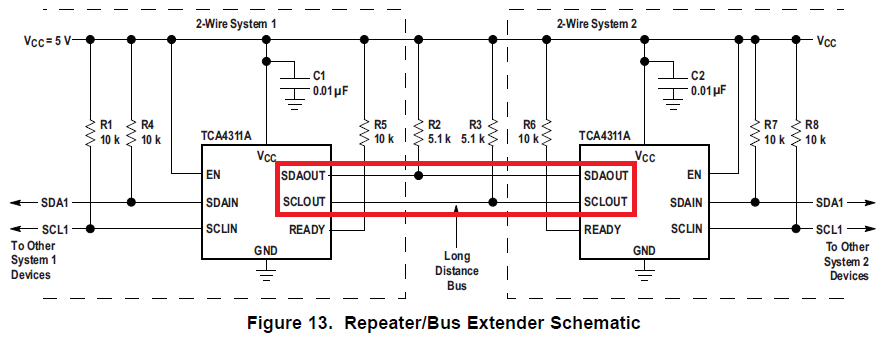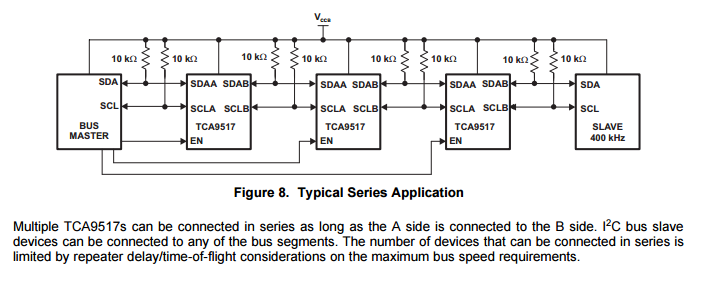Dear Technical Support Team,
I have two questions about TCA4311A(I2C Hot Swappable 2-Wire Bus Buffers).
Q1.)
"Figure 13. Repeater/Bus Extender Schematic" of datasheet shows back-to-back connection of two TCA4311A.
This figure shows that SDAOUT(SCLOUT) of left side(System1) and SDAOUT(SCLOUT) of right side(System2) are connected each other(Not Input and Output connection).
Why is that connection? Is it the reason why TCA4311A has bi-directional buffer and out is card side of TCA4311A?
If you have the other reason, please let me know.
Q2.)
Customer's application has many boards including I2C interface and these connects in series with harness.
So they want to use TCA4311A to improve a blunt signals using connection like a " Figure 13. Repeater/Bus Extender Schematic ".
Following figure shows the simple situation for customer's system and they want to place it on middle of three boards(In fact they have more boards).
Should they use two TCA4311A and connect IN-to-IN(SDAIN and SCLIN) for main I2C side and OUT(SDAOUT and SCLOUT) is for harness side?
【datasheet】
http://www.tij.co.jp/jp/lit/ds/symlink/tca4311a.pdf
Best Regards,
y.i




